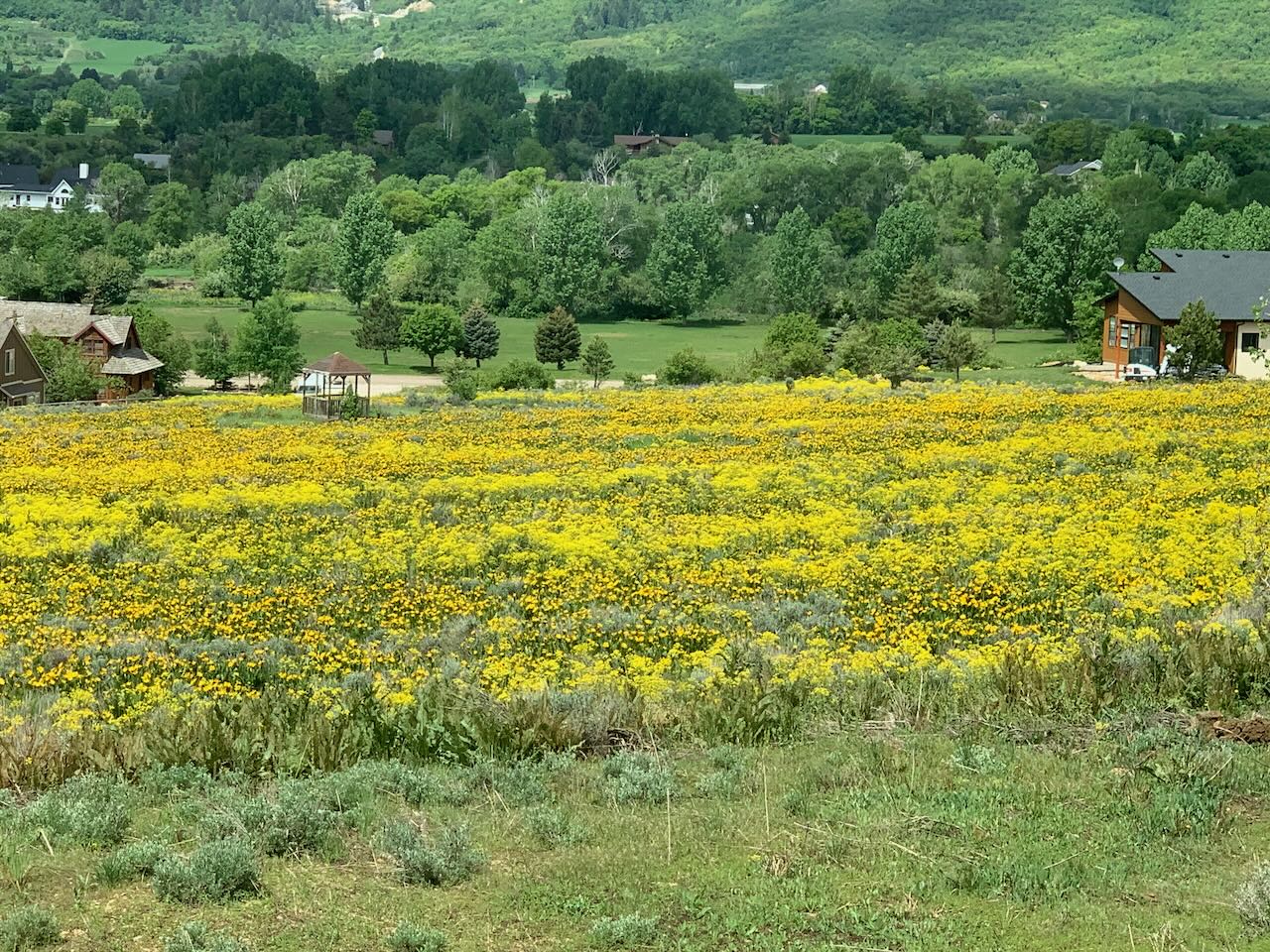What is Dyer’s Woad?
Dyer’s Woad (Isatis tinctoria), a member of the mustard family (Brassicaceae), is a non-native, invasive plant introduced to North America from Europe in the mid-19th century, primarily as a source of indigo dye. This biennial herb, which can also behave as a winter annual or short-lived perennial, typically grows 1 to 4 feet tall and is characterized by its thick, fleshy taproot that can penetrate up to 5 feet deep. In its first year, it forms a basal rosette of bluish-green leaves with a prominent whitish midrib. In its second year, it bolts, producing tall, leafy stems topped with clusters of bright yellow, cross-shaped flowers that bloom in late spring. These flowers develop into distinctive flattened, pear-shaped seed pods that turn purplish-black as they mature, each containing a single seed. A single plant can produce 350 to 10,000 seeds, which are dispersed by wind, animals, human activities, or as contaminants in hay or seed crops. The seeds, encased in protective pods, can remain viable in the soil for up to eight years or more, contributing to the plant’s persistence.
Why Does Dyer’s Woad Need to Be Removed?
Dyer’s Woad is classified as a Class 2 noxious weed in Utah, indicating it is a high priority for control due to its significant ecological and economic impacts. The plant is highly competitive, often forming dense monocultures that outcompete native vegetation, reduce biodiversity, and degrade habitats. Its allelopathic properties—chemicals in its seed pods that inhibit the germination and growth of nearby plants—give it a competitive edge, further displacing native forbs and grasses. This displacement reduces forage quality for wildlife and livestock, as most animals, including deer, elk, and cattle, avoid consuming Dyer’s Woad unless no other food is available, leading to overgrazing of remaining desirable plants. In agricultural settings, it invades croplands, pastures, and alfalfa fields, reducing crop yields and causing economic losses estimated at millions of dollars annually in Utah alone. For example, infestations in the Pacific Northwest have been reported to reduce cattle grazing capacity by up to 38%. Additionally, Dyer’s Woad thrives in disturbed areas such as roadsides, rangelands, and waste areas, making it a widespread nuisance. Its ability to spread rapidly—estimated at 14% per year in some regions—underscores the urgency of control efforts to prevent further ecological damage and economic costs.
Prevalence in Utah
Dyer’s Woad is particularly prevalent in Utah, especially in the northern regions and Cache Valley, where it has become a significant problem. Introduced to Utah as a contaminant in alfalfa seed or possibly by early settlers, it has spread extensively across rangelands, foothills, pastures, roadsides, and disturbed sites. By 1990, it was estimated to infest 10,000 hectares in Idaho, with similar widespread infestations in Utah. In Cache Valley, wet conditions in recent years have fueled its proliferation, making it a county-wide issue. The plant’s adaptability to various environments, including rocky, well-drained soils and high-elevation areas, has allowed it to dominate diverse landscapes, from big sagebrush and bluebunch wheatgrass communities to agricultural fields. Despite control efforts over the past decade, Dyer’s Woad remains widespread in Utah, with early containment attempts largely unsuccessful. Community initiatives, such as Cache County’s “Bag ‘O Woad” program, encourage residents to pull and bag the weeds, reflecting the scale of the issue and the need for ongoing management. Its presence is so pervasive that it is considered a “fairly new invader” in some surrounding counties and states, but in Utah, it is deeply entrenched, particularly in northern regions like the Wellsville Mountains.
Control Methods
Effective management of Dyer’s Woad requires a combination of prevention, mechanical, chemical, and biological control strategies. Prevention is key, involving regular scouting of high-risk areas like fence lines, ditch banks, and rights-of-way to detect new infestations early. Mechanical control, such as hand-pulling or digging, is effective for small infestations, particularly when the soil is wet, but requires removing the taproot below the root crown to prevent resprouting. For larger infestations, cutting the taproot at least one shovel spade deep is recommended, and plants with maturing fruits should be bagged to prevent seed dispersal. Mowing is less effective but can reduce seed production if timed early in the season. Chemical control using selective herbicides is effective when applied to rosettes in spring or fall, or during the pre-bloom stage, though care must be taken to avoid harming desirable plants, especially in mixed grass-legume pastures. Biological control shows promise, with the native rust fungus Puccinia thlaspeos, first identified in southern Idaho in 1978, naturally spreading to Utah and reducing seed production by infecting plants, causing misshapen, spore-covered growth. Cultural practices, such as planting competitive crops or maintaining healthy plant cover, can also limit Dyer’s Woad establishment. Community efforts, like those in Cache County and City Creek Canyon, demonstrate the importance of collective action in managing this invasive species.
Utah State provides a video on how to control Dyers Woad weed:
Conclusion
Dyer’s Woad poses a significant threat to Utah’s ecosystems, agriculture, and economy due to its invasive nature, competitive behavior, and widespread distribution. Its prevalence in northern Utah, particularly in Cache Valley, highlights the need for proactive and sustained control efforts. By combining prevention, mechanical removal, herbicide application, and biological controls, Utahns can mitigate the impact of this noxious weed. Community engagement and awareness, supported by resources like Utah State University Extension and local weed management programs, are critical to curbing its spread and protecting the state’s natural and agricultural landscapes.
